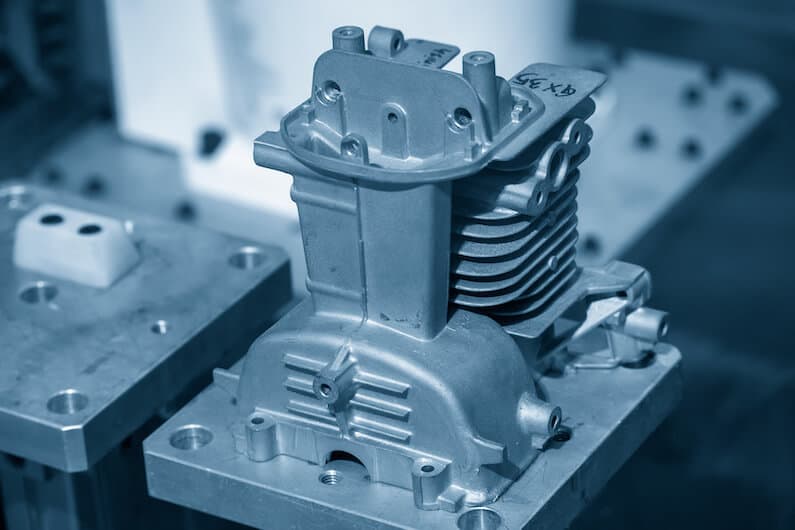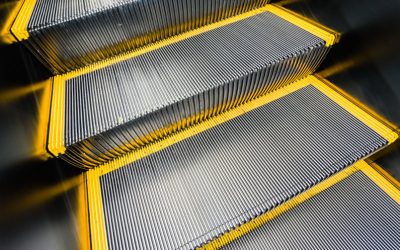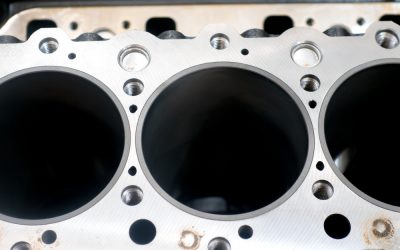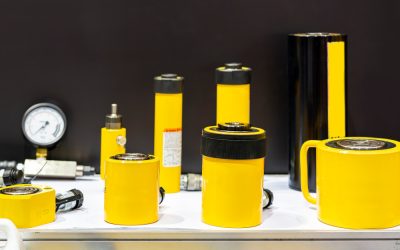If you have read our article on aluminum die casting, you might already be familiar with some of the advantages of high-pressure die casting. This method is one of the most popular manufacturing techniques for aluminum products, but what makes it so attractive for businesses and engineers alike?
This article further explains how pressured die casting works, expands on the advantages of this method, and introduces some of the shortcomings of using high-pressure die casting.
Table of Contents
Under Pressure: High-Pressure and Low-Pressure Die Casting
Every metal casting process has the same core objective: to get molten metal into a mold where it solidifies into a specific shape. There are various casting methods, and we classify them into subcategories based on the mold properties and the filling process used.
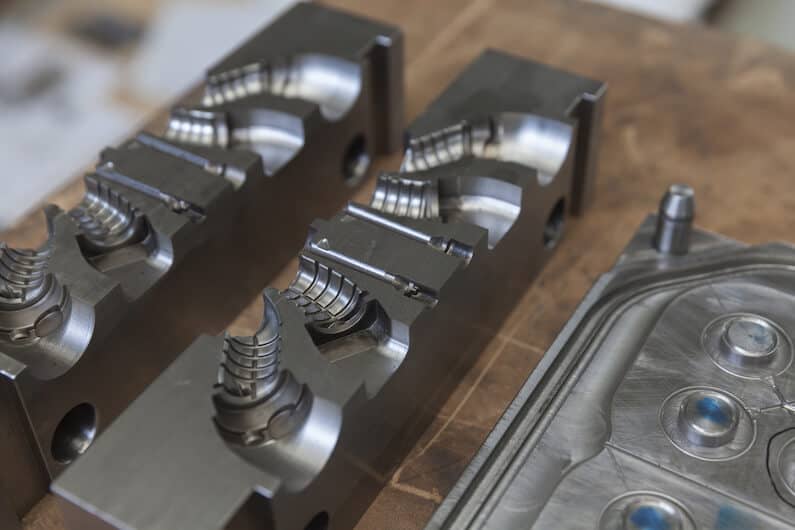
In die casting, the most common method is to use positive pressure — forcing the molten metal to fill every crevice in the mold completely. This can be accomplished through:
- Low-pressure casting
- High-pressure casting
Low-pressure die casting utilizes a relatively small applied pressure of 20-100 kPa (2.9-14.5 psi). This process forces the molten metal to travel vertically from a furnace into the mold in a slow and gradual climb.
On the other hand, high-pressure die casting is a much faster process that typically involves a horizontal setup. In this case, a piston creates up to 150,000 kPa (21,700 psi) of pressure (for cold-chamber die casting) and injects the molten metal into the die.
There are other variations on die casting as well:
- High-pressure die casting can be assisted by a vacuum created inside the die, which helps counter some casting defects.
- Die casting can be performed purely through the use of gravity to fill the mold, like in permanent mold casting.
The Advantages of Using High-Pressure Die Casting
Using a high-pressure piston to inject molten aluminum into a mold offers many advantages over other aluminum casting and manufacturing processes.
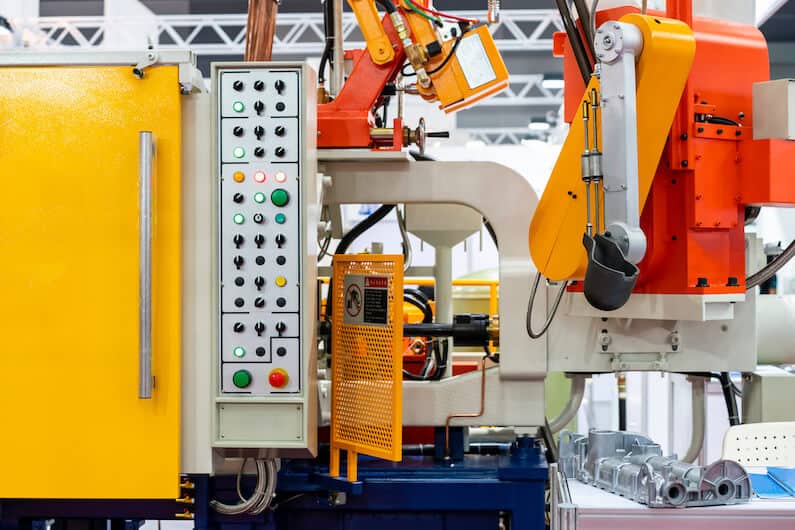
Using very high pressure to inject the molten metal ensures that it will fill every nook and crevice of the mold, allowing you to produce complex shapes. It accommodates stringent requirements for appearance and dimensional tolerances. As such, it is excellent for meeting quality standards.
Additionally, you can achieve smooth surface finishes, resulting in products that are excellent for electroplating treatments. High-pressure die casting even allows for relatively thin-walled components to be cast, which is something low-pressure die casting and many other casting methods cannot replicate.
Among these benefits, one of the biggest advantages of high-pressure die casting is that it achieves exceptionally short casting cycles. These cycles are well-suited to the mass production of complex and lightweight components. For these reasons, it sees widespread use in manufacturing.
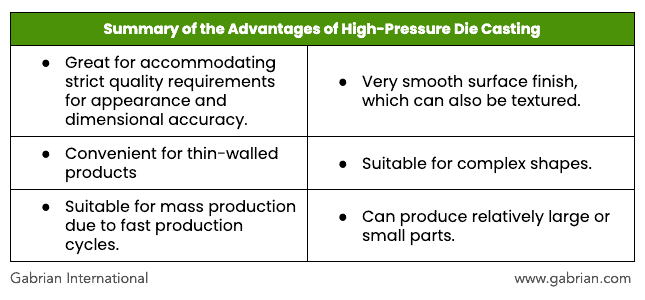
The Disadvantages of Using High-Pressure Die Casting
As with every forming process, high-pressure die casting presents some disadvantages that could make it impractical for certain applications.
One of the main drawbacks of this process is the comparatively high startup and operation costs. The dies are costly to make and more complicated than semi-permanent or sand molds. As such, high-pressure die casting costs are usually only justified with high-volume production runs.
Additionally, while high-pressure die casting boasts a short casting cycle ideal for rapid production, you can only realize this benefit for thinner-walled castings. If the casting is too thick, the additional time for solidification may offset the benefit of rapid injection.
Another disadvantage is the possibility of porosity in the cast due to air pockets. Porosity can be caused by selecting the wrong alloy for the cast, shrinkage of the cast material during cooling, or filling the mold too quickly or too slowly, among others.
Heat treatment and welding are not recommended in casts with porosity, as they can cause the air in the pores to expand, creating microcracks inside the component. However, if heat treatment is essential for the part, you can adopt several different techniques to reduce porosity. These techniques allow you to heat treat or weld the casting in a limited capacity.
For those investigating this process for metals other than aluminum, it is also worth noting that you can only use high-pressure die casting with high-fluidity metals, such as aluminum, zinc, or magnesium.
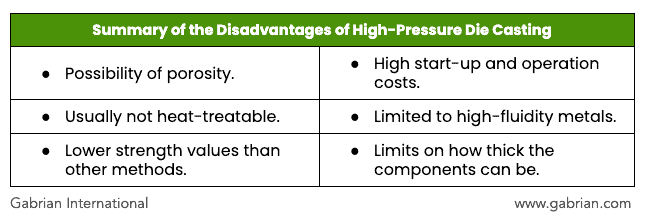
Is High-Pressure Die Casting Right for your Project?
As with any manufacturing method, the many advantages of high-pressure die casting come hand-in-hand with some disadvantages.
Nevertheless, high-pressure die casting remains one of the most widely employed methods for creating aluminum products, particularly when you want to mass-produce parts with complex geometries.
If you want to find out more about Gabrian’s capabilities for aluminum high-pressure die casting, take a look at our services page or contact us and tell us about your project.

